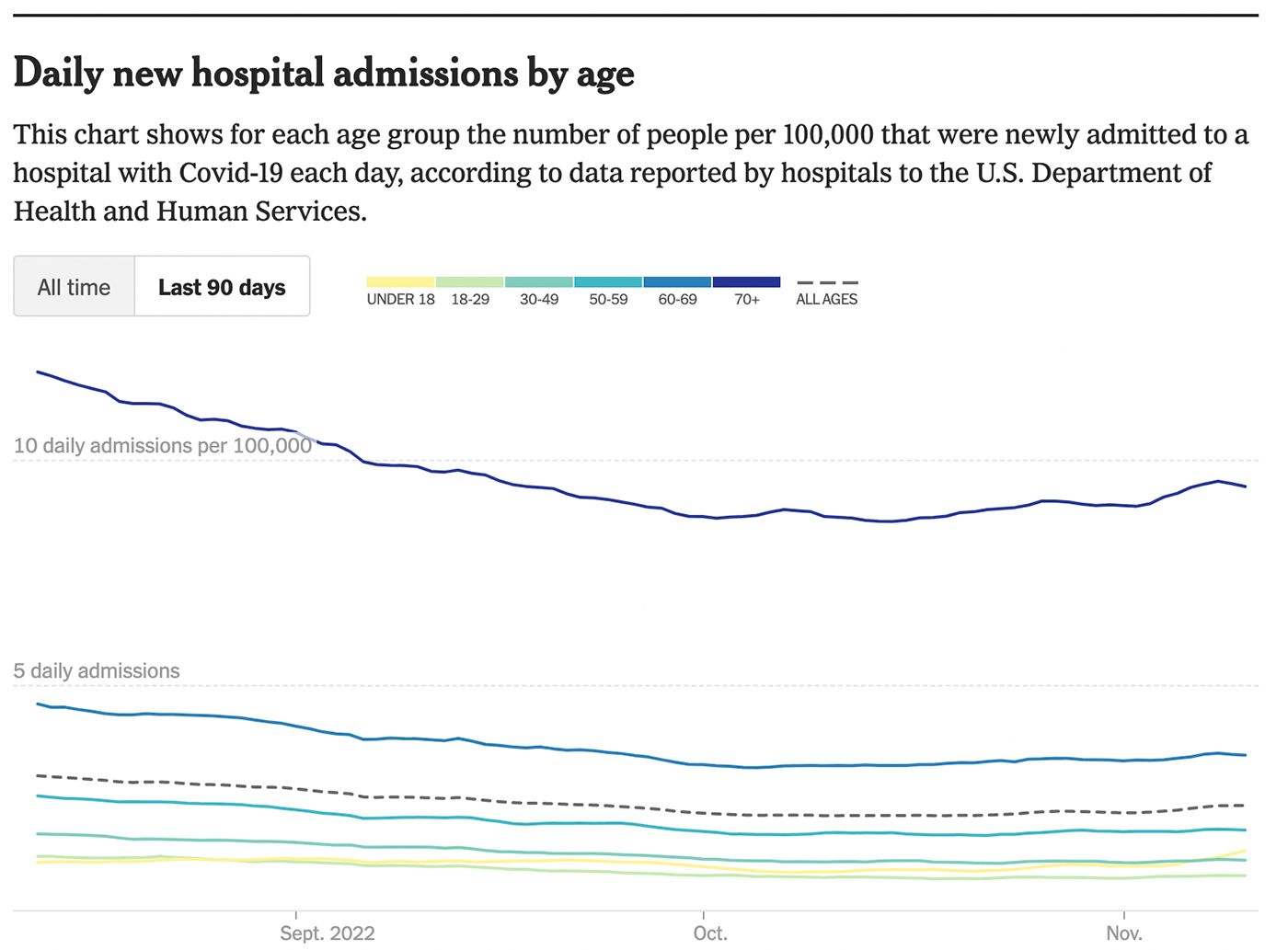It may be too soon to tell what the holiday season has in store when it comes to the tail end of this three-year pandemic. But there is reason to hope that we won't have a very severe winter surge of new COVID infections, especially if more people get their updated boosters.
The new bivalent boosters haven't seen nearly enough takers yet, and it seems like apathetic Americans are losing the sense of fear that drove them to get vaccinated back in the winter/spring of 2021. Epidemiologists say that, especially if you are age 50 or older, you should get an updated booster in order to avoid landing in the hospital this winter.
While hospitalization numbers — especially for those age 70+ — are beginning to tick up around California and the rest of the country, infection rates remain fairly low. Nearly the entire nation is in the CDC's green tier for low community levels of the COVID virus, and that includes all of California.

People are still landing in the hospital with COVID, however. And while the Bay Area reached a seasonal low point of 442 patients in hospitals with COVID as of the first week of October, the number didn't continue declining from there and has now started to rise. As of Thursday, there were 531 people with COVID in Bay Area hospitals — 60 of those patients were in ICU beds, and we don't have any demographic or age breakdown.
And people are still dying of COVID — an average of 420 per day in the U.S. since August 1. The current American death toll is 1,076,979.
Across California, hospitalization numbers have been ticking upward since hitting a low of 1,514 on October 24. That is still about 50% higher than the lowest hospitalization levels of the pandemic, which were back in mid-June 2021, right after everyone was vaccinated but before most people had really restarted their lives.
Hospitalizations across the state are up to 1,871 as of Thursday, November 10 — a 23.5% jump in three weeks.

The New York Times' national data show daily new hospital admissions going up primarily for people age 70 or over.

As physician and author Dr. Eric Topol explains in his latest newsletter on the pandemic, data about the current BQ.1.1 wave in France suggests that the variant is not gaining strong traction — and if we can assume similar patterns of immunity and infection here, that is a positive sign.
According to new CDC data, BQ.1.1 accounted for 24% of all circulating variants this week, and BQ.1 represented just over 20%.
"In New York State, where BQ.1.1 is at the highest level in the United States (still well below peak in France), there has yet to be any increase in Covid hospital admissions, which is another positive sign," Dr. Topol writes.
Topol is concerned about the slow uptick of the bivalent booster heading into the holiday season, and he cautions that there could always be an unwelcome surprise with another Omicron variant — those "of concern" being tracked now are BQ.1.1.x, XBB.x, CH.1, and BQ.1.1.10 — or some other variant entirely different from the Omicron family taking hold in the U.S. and growing quickly the way Omicron did last December.
The hope is that the compound immunity now found across the population will prevent this, but we're still not totally out of the woods. Hopefully, though, by January or February, we'll be able to say the "pandemic phase" of COVID is finally fucking over. Just three years later!

